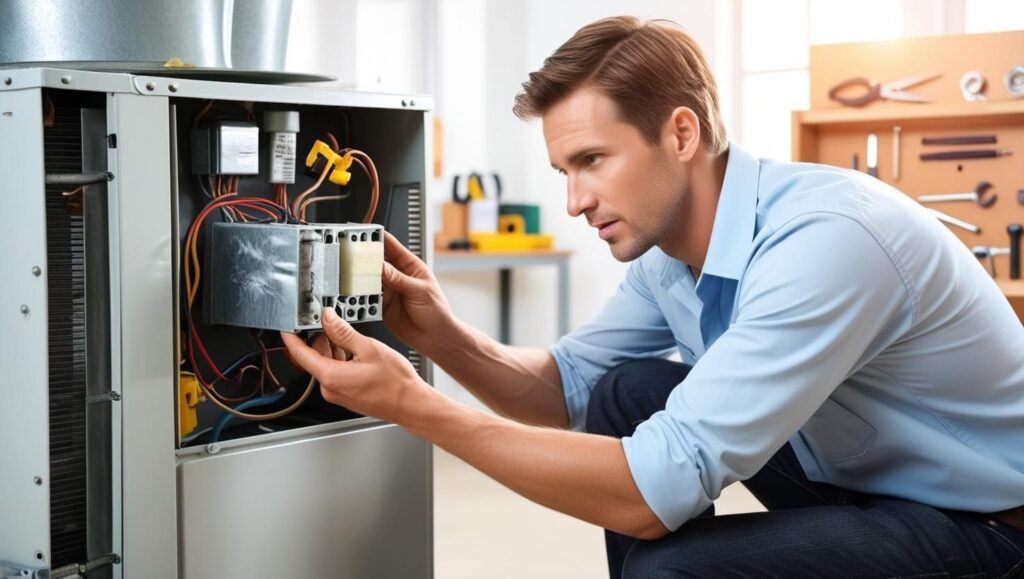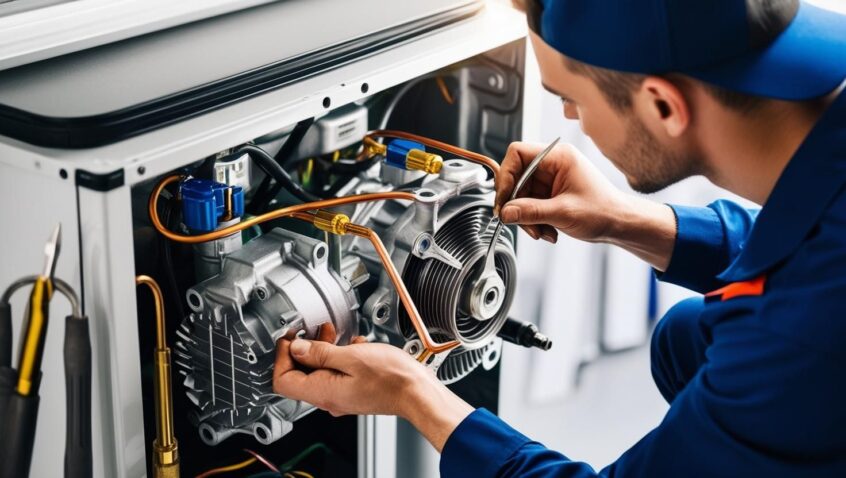An AC compressor is definable as an essential component of any air conditioning system and technology. It will move the refrigerant gas in the system to carry out heat exchange and temperature control. AC compressors can also be damaged or worn throughout service time and may call for repair or replacement. Individual repair of an AC compressor is economically more beneficial as employing a professional will cost you a fortune. The repair of various common problems with AC compressors is described in detail in this article.
Before beginning any AC compressor repair, ensure you have the following:
- Protective gear: – Gloves, Protective glass, Shoes etc. Handling high-pressure systems is always a risky business.
- Basic hand tools – Wrenches, screwdrivers, pliers, etc. It is also equally valid that many of the essential repairs entail disassembling housing and parts.
- Refrigerant recovery machine – Used before opening a sealed system by gathering leftover refrigerant gases. The unauthorized discharge of refrigerants results in hefty penalties.
- Vacuum pump – This is used when the system has been closed following a repair process, and it helps to pump air and moisture out of the system. Water is an agent of corrosion, and as such, it will cause corrosion after some time.
- Refrigerant leak detector – To determine if there is leakage, which is the main problem.
Evaluation and Identification of Problems
The initial assessment of the system is a simple but critical approach to analyzing the whole overall structure. Search for any evidence of force, disintegration, rust, and any kind of seepage. Always use a leak detector on all the joints and seals. It will help to distinguish whether the problems are found in the central compressor or er accessory parts.
Warning signs specific to the compressor include:
- Unusual noises: Whether the sound that comes out of the internal compressor is knocking, screeching, or squealing, the ideal thing will be to change it.
- High operational temperatures: repeated overheating is known to increase the rate of wearing out of machines.
- It might be because the compressor is faulty or because of leakage.
- Electrical supply and wiring of the compressor.
Broadly classified, by the very inspection, you get to determine the potential challenge and, hence, the region that will need mending.
Managing Ordinary Compressor Troubles
Some typical AC compressor faults which can be repaired include:
Broken Mounts
The compressor should be firmly fixed on a solid structure during operation. Brittle rubber mounts can degrade and break over time, causing misalignment and noise and vibration.
To repair:
1. Removal of the mounting bolts allows for the elevation of the compressor.
2. The mount recess area should be cleaned appropriately
3. Replace the new rubber with the required part mounting

Damaged Cold Start Relay
Cold start relays help the compressor motor produce sufficient starting torque when freezing outside. Failing relays do not let it accord initiate.
To replace:
1. Find and extract relay
2. Disconnect the electrical leads of relay input and output
3. Thereafter, the correct rated replacement relay should be installed.
4. Reconnect all fittings tightly to close the process for the next heat and steam process.
Faulty Contactor Points
The contactor permits DPST to the compressor. When contact points are pitted or burned they impede flow resulting in failure.
To repair:
1. Cut off all electrical power supply sources
2. Access to the interior of the contactor is provided by unscrewing the bolts that hold the contactor together.
3. Both contact points shall be de-soldered and replaced
4. Reassemble case correctly
Reassembly and Evacuation
After all the repairs have been made, one is now able to reassemble the sealed system. Replacing any insulation, or any protective covers used, ought to be done. If there are any blanking caps used, install all, or if intake filtration is used, install all. Fittings must be hermetically sealed but should not be over tightened. Remove all the moisture by using the pump. Restock the refrigerant to desired levels of the manufacturer. Power up to test operations.
Conclusion
Although the compressor has a confounding design, many of the problems with its external components are Diagnosable with some mechanical finesse and AC safety precautions. However, diagnosing root causes is not for the dozy since it involves utilization of pressurized gasses and high voltage. Need help, don’t hesitate to ask for it from professionals. Conform to the correct periodic regimes of service of the compressors, to ensure long life cycles for the compressors. Replacement may be the better solution in case if internal damage is several and deep.

